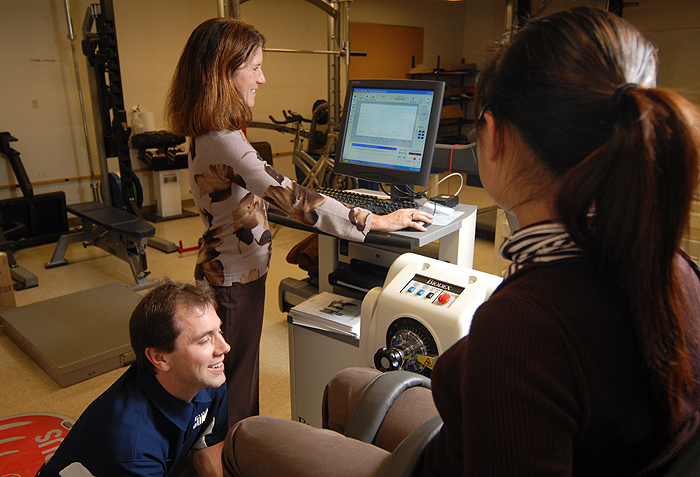
The Department of Kinesiology in the Neag School of Education has received one of the highest honors in its field: For the second consecutive time, the National Academy of Kinesiology has ranked the doctoral program in kinesiology No. 1 in the U.S. The No. 1 ranking stands for five years.
“We are extremely proud of this continued success by our kinesiology department,” says Thomas DeFranco, dean of the Neag School of Education. “The competition was fierce, and we are in good company in the rankings.”
Doctoral programs in kinesiology are offered at 66 institutions of higher education. Among the top 20 programs are Pennsylvania State University (#2), Columbia University (#4), the universities of Maryland (#3), Massachusetts (#5), Virginia (#6), Illinois (#7), Texas (#10), Michigan (#12), Florida (#13), Georgia (#17), and Ohio State (#20).
“This honor is not only important to the kinesiology department in terms of highlighting the quality of its faculty, research, and students; it reflects well on the whole school,” DeFranco says. “Carl Maresh [the department head] and his team have continually worked hard to achieve our mission by raising standards and recruiting some of the field’s top researchers and students.”
The National Academy of Kinesiology (until recently called the American Academy of Kinesiology and Physical Education) is dedicated to educational and scientific advancements in the field. The most recent evaluation, based on data from 2005 to 2009, took into account 16 performance metrics involving faculty (nine indices) and students (seven indices).
Among the factors weighed in the evaluation were students’ GRE scores, percentage of students on research support, student placement in postdoctoral positions, faculty publications in refereed scientific journals, external grant funding, editorial boards served on, and fellowships in professional organizations.
“It’s wonderful that our efforts are reflected in objective performance metrics,” says Carl Maresh, professor and head of the kinesiology department. “We’ve been working hard and we’ve improved on things since the last rankings were released in 2005. We made concerted efforts to specifically improve in grant funding, students placed in post-doc positions, and research publications. These rankings provide a great way for programs to measure themselves in comparison to other highly successful programs and conduct strategic planning to become better.”
The department offers two areas of doctoral study: exercise science and sport management. Both of these have dedicated research laboratories. The highly acclaimed Human Performance Laboratory brings together the exercise science team, with access to sophisticated research technologies.
Eleven tenure-track faculty members are involved in the kinesiology doctoral program. Maresh says they are highly productive, and have also benefited by developing successful research collaborations both at UConn and with other universities. As a result, the National Academy of Kinesiology determined that over the past five years, UConn led the nation in the number of peer-reviewed publications generated from faculty research, along with the number of scientific presentations.
Maresh and his faculty are already looking ahead, however, to what it will take to stay on top. He hopes to build upon current success, with strategic faculty placements, new research initiatives, and facility improvements.


